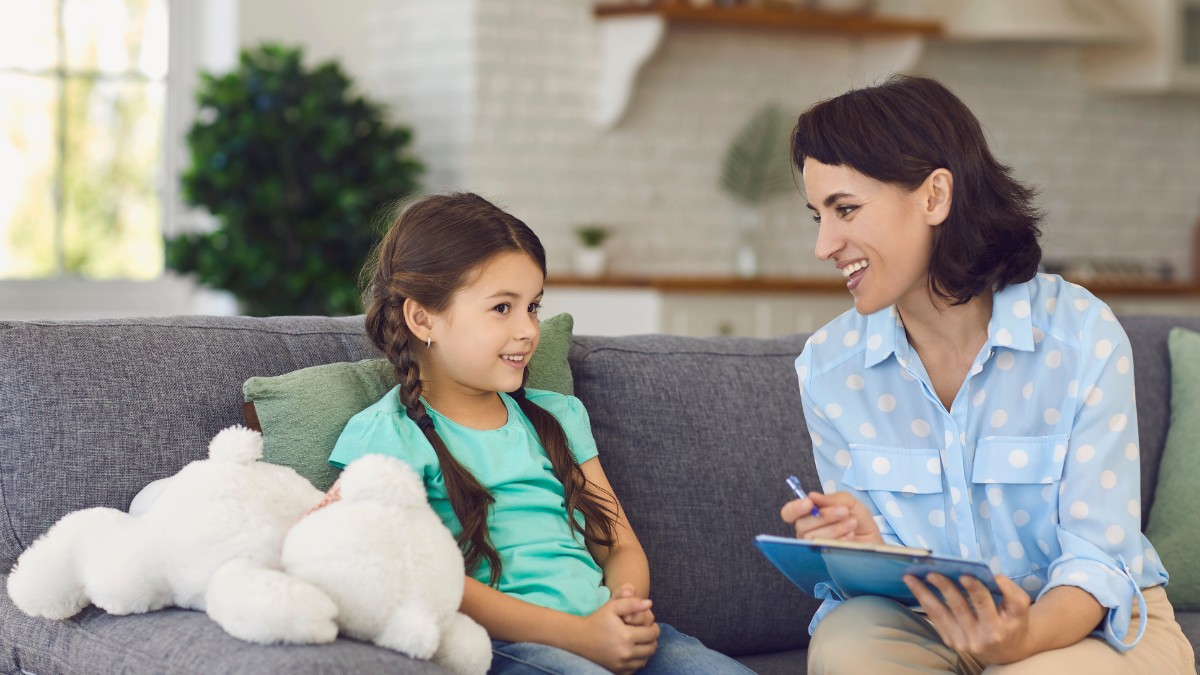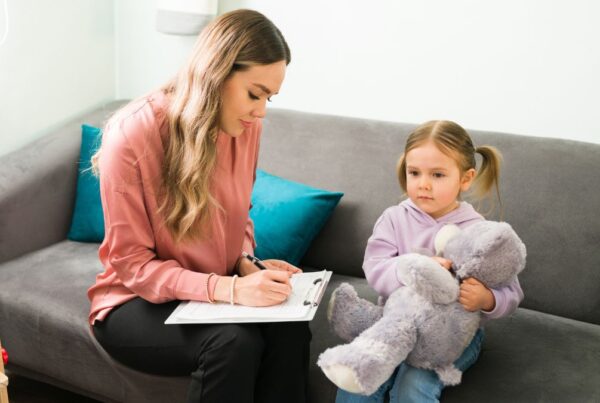As a parent of a child with autism, you’ve probably been told about ABA therapy—Applied Behavior Analysis—as the gold standard for intervention. But when it comes to choosing between center-based and in-home services, the decision can feel overwhelming. Here’s the truth: for many families in Maryland, in-home ABA is not just an alternative. It’s a game-changer.
In-home ABA therapy brings clinical expertise directly into your living room, kitchen, backyard, and everywhere your child learns and grows. It takes therapy out of a clinical vacuum and roots it in the real world—your child’s world. And that can make all the difference.
The Power of Learning in Real Life
One of the most significant benefits of in-home ABA is that therapy happens where life happens.
Your child isn’t practicing communication, self-help skills, or managing behavior in a simulated room. They’re learning how to ask for a snack at the kitchen table, how to follow directions when it’s time to clean up toys, and how to tolerate transitions between play and bedtime in their own home.
These skills aren’t just taught; they’re lived.
What makes this especially powerful is something called generalization. In ABA terms, generalization is when a child can apply what they’ve learned across different people, places, and situations. In-home ABA therapy skips the artificial transfer phase and goes straight to the setting where generalization matters most.
 Family-Centered from the Start
Family-Centered from the Start
In-home therapy naturally weaves caregivers into the process—not as spectators but as active participants. It’s not just your child’s therapy plan; it becomes your family’s shared growth path.
ABA therapy done at home offers the following supports to families:
- Hands-On Parent Training: Parents are coached in real time while navigating everyday challenges—like getting your child dressed for school or managing a meltdown at dinner. It’s not a workbook or a theory—it’s practical, and it’s yours.
- Flexible Schedules: Home-based services tend to be more adaptable to your family’s needs. Morning routines, nap times, or therapy in the late afternoon? Your team works with you, not against your schedule.
- Personalized Interventions: Strategies are designed to fit your parenting style, home structure, and cultural values. You’re not adjusting your life to fit therapy—therapy is tailored to your life.
- Natural Routines as Teaching Tools: Your child’s day—from brushing teeth to playing in the backyard—becomes an opportunity for growth, development, and learning.
When caregivers are supported, children thrive. You know your child better than anyone else. In-home ABA puts that knowledge front and center.
Practical Skills in Practical Spaces: What In-Home ABA Can Target
ABA isn’t just about flashcards and token boards. It’s about real-life skills that increase independence and improve quality of life—for both your child and your family.
Here are some examples of what in-home ABA might look like:
1. Toileting Independence
Learning to use the toilet in the actual bathroom your child uses every day is far more effective than learning in a center. Therapists can teach your child—and coach you—on routines, visual supports, and reinforcement schedules tailored to your bathroom setup.
2. Morning and Bedtime Routines
From brushing teeth to putting on pajamas, ABA providers can break down these routines into teachable steps. They’ll help your child build independence while reducing resistance and anxiety—two common hurdles during transitions.
3. Feeding and Mealtime Behaviors
Picky eating, food refusal, and mealtime meltdowns are addressed right at your dinner table. With therapist guidance, your child can develop healthy eating habits using gradual exposure and positive reinforcement.
4. Sibling Interaction and Social Play
Real-world socialization happens with siblings, cousins, and neighborhood friends. ABA in the home can guide positive peer interactions, turn-taking, conflict resolution, and joint attention—right in the family room or yard.
5. Tantrums, Aggression, and Self-Injury
Problem behaviors often occur more intensely or more frequently at home. Therapists can analyze the behavior in the exact context, develop a Behavior Intervention Plan (BIP), and support you in implementing it with consistency.
 How In-Home ABA Supports Progress Beyond Therapy Hours
How In-Home ABA Supports Progress Beyond Therapy Hours
Therapy hours are limited—but your time with your child isn’t. That’s why one of the biggest values of in-home ABA is what happens between sessions.
Before we get into the details, let’s clarify something: You are not expected to become the therapist. But you are the most consistent figure in your child’s life. With the right support, you can create learning opportunities from everyday moments—without needing to schedule extra time or change your routines.
Here’s how in-home ABA empowers caregivers and extends the benefits of therapy throughout the day:
1. Embedded Learning Opportunities
Your therapist will identify places where learning can naturally happen: asking for help during homework, cleaning up toys, waiting for a snack. These become short, repeatable teaching moments that feel like parenting—not therapy.
2. Real-Time Feedback and Coaching
You’ll receive guidance in the moment, during real situations. It’s not hypothetical or staged. You learn strategies by using them—while a therapist observes and supports.
3. Customized Visual Supports and Tools
Whether it’s a visual schedule taped to the fridge or a reward system on the wall, these tools aren’t generic—they’re built around your home, your child’s preferences, and your family’s flow.
4. Data That Reflects Real Life
Your therapy team isn’t relying solely on clinic-based observations. They’re tracking behaviors and progress in your actual home, which leads to more accurate goals and interventions.
5. Improved Carryover Across Caregivers
Babysitters, grandparents, or siblings can be included in training sessions, so that everyone who plays a role in your child’s life is on the same page. This unified approach reduces confusion and supports consistency.
Common Myths About In-Home ABA—and the Real Truth
Some families hesitate about in-home services because of things they’ve heard. Let’s clear a few of those up.
“My home isn’t big enough for therapy.”
In-home ABA doesn’t require a therapy room or a setup with special equipment. A living room, bedroom, or even a hallway can become the perfect space for learning.
“I’m not comfortable having a stranger in my home.”
That’s completely valid. A reputable ABA provider will prioritize building a relationship with you and your child first. Transparency, professionalism, and cultural sensitivity are key parts of the process.
“I don’t want my child to rely on therapy to function at home.”
The goal of ABA is the opposite: to fade out support and help your child build the skills to function independently. In-home ABA puts these supports right where independence matters most—your child’s daily environment.
“My child needs socialization with other kids.”
Absolutely. But in-home ABA can actually prepare your child to be successful in group settings by teaching foundational skills like sharing, taking turns, tolerating delays, and managing sensory input—all before stepping into a social environment.
Final Thoughts: Why In-Home ABA Deserves a Closer Look
Choosing a therapy format is a big decision. Center-based services offer structured learning, but they’re not always the right fit for every child or family.
In-home ABA offers something unique: therapy built around your child’s world. It gives your child the chance to grow where they feel safe. It gives you the chance to participate, to learn, and to lead.
If you’re looking for a way to help your child build meaningful skills—in a setting where those skills actually matter—in-home ABA therapy might be the approach that truly moves the needle.
With Crown ABA, support isn’t just clinical—it’s personal, practical, and rooted in your everyday world.





